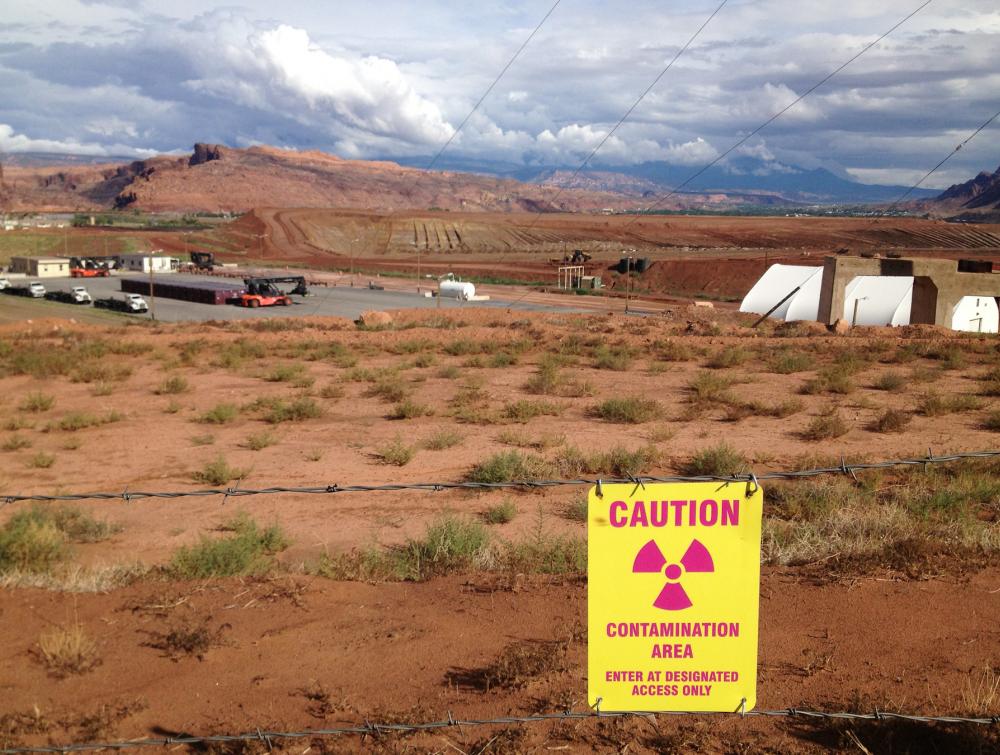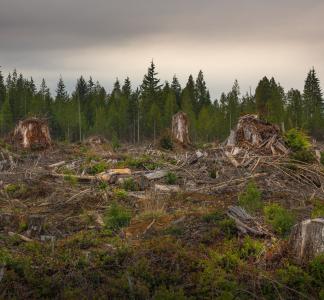How NEPA gives communities a chance to defend against environmental threats

Site of a project in Moab, Utah, to relocate radioactive mill tailings away from the Colorado River
Kelly Michals, Flickr
NEPA has protected communities and wildlife from toxic harm, industrial pollution and habitat destruction for decades
When a uranium mill site near Moab, Utah, closed its doors in the 1980s, the management company proposed to store millions of tons of radioactive uranium tailings on the banks of the Colorado River. The U.S. Nuclear Regulatory Commission initially said the tailings wouldn’t hurt the environment, but the local community was concerned. They suspected the waste would endanger most of the Colorado River’s watershed and threaten the drinking water of millions of people.
Banding together with non-profit advocacy groups, the community rallied against the project. Thanks in part to public comments gathered under the National Environmental Policy Act (NEPA), the Department of Energy developed a plan to move the tailings to a secure, multilayered disposal cell 32 miles away, far from a major body of water.
Without NEPA, it’s possible we’d be looking back at an uninterrupted decade of radioactive waste leaching into the water supply and making people sick in nearby communities.
Fourteen years later, the massive cleanup project is near completion. Since it started, we’ve learned even more about the health threats posed by uranium tailings. Without NEPA, it’s possible we’d be looking back at an uninterrupted decade of radioactive waste leaching into the water supply and making people sick in nearby communities.
For 50 years, NEPA has required the government to consider how a project will affect the environment and local communities and has given the people who will have to live with the consequences a fair chance to weigh in. It has required that agencies explain and justify their plan—offering it up for public scrutiny, considering alternative options, accepting feedback about it and analyzing potential impacts.
To understand the importance of NEPA, let’s look at how this crucial and little-discussed law works.
How public input happens under NEPA
NEPA provides a framework for public participation and transparency in decisions affecting how federal public lands are managed. This bedrock law requires the government to take a hard look at their actions before choosing a path that negatively affects public health and the environment.
Say a federal agency wants to start a project—build a road, dam a river or even approve a permit for a company to drill on publicly owned property. The agency will prepare a report called an Environmental Assessment that basically summarizes the likely consequences of that project. If it seems like those consequences will be significant, the agency moves on to prepare a more detailed report.
This is the part of the process where the public plays an especially important role, beginning with what is called “scoping.” That’s when an agency solicits input—for example, through public meetings or online comments—about what specific environmental impacts the government should be considering (in other words, the “scope” of the review) and what alternative courses of action should be on the table.
After the agency considers that input, it conducts a full environmental review and produces draft findings in an Environmental Impact Statement. The draft Environmental Impact Statement is again subjected to public review and comment before the agency arrives at a final report and decides which course of action to take.
The bottom line is that the public needs to have a chance to raise their concerns before a backhoe or drilling rig ever touches the ground.
NEPA makes agencies look before they leap
In short, NEPA requires the federal government to “look before it leaps.” If an agency wants to widen a highway, log a forest or store toxic waste in the banks of a river, it must first both formally consider how that project will affect the environment and make sure nearby communities—the people who will have to live with the consequences—get a fair chance to weigh in on whether it’s a good idea.
It’s been a critically important tool for our democracy, ensuring transparency and accountability from large and complicated decision-making entities that could all too easily operate independent of what actually affects people “on the ground.”
In 2020 this important law came under attack in the form of regulations that weakened it and made it harder to use. But after people like our members raised their voices, in 2024, the White House Council on Environmental Quality finalized a rule to modernize and strengthen NEPA. It ensures that the public has a stronger say in decisions that affect their health and the public lands they care about. It will also help federal agencies make the best possible decisions based on science while engaging with communities early and often to arrive at the best possible outcomes. These new regulations will direct how NEPA is implemented, ensuring greater efficiency, accuracy, transparency and inclusiveness of all people in this process.
Now and in the years ahead, we’ll need to remain vigilant about defending NEPA and making sure it’s up to meeting modern environmental challenges. It’s a key part of ensuring the public keeps its voice.


